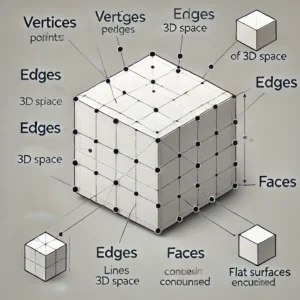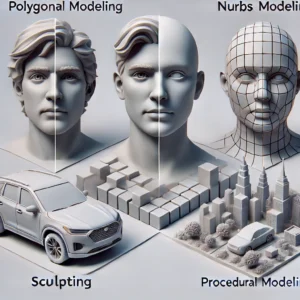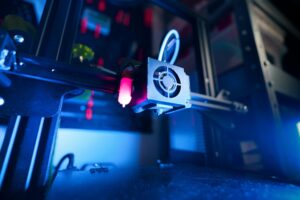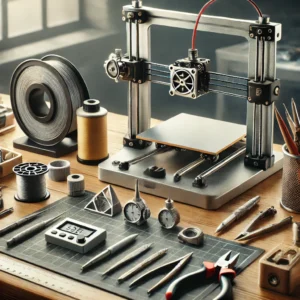The Ultimate Guide to 3D Modeling and Design
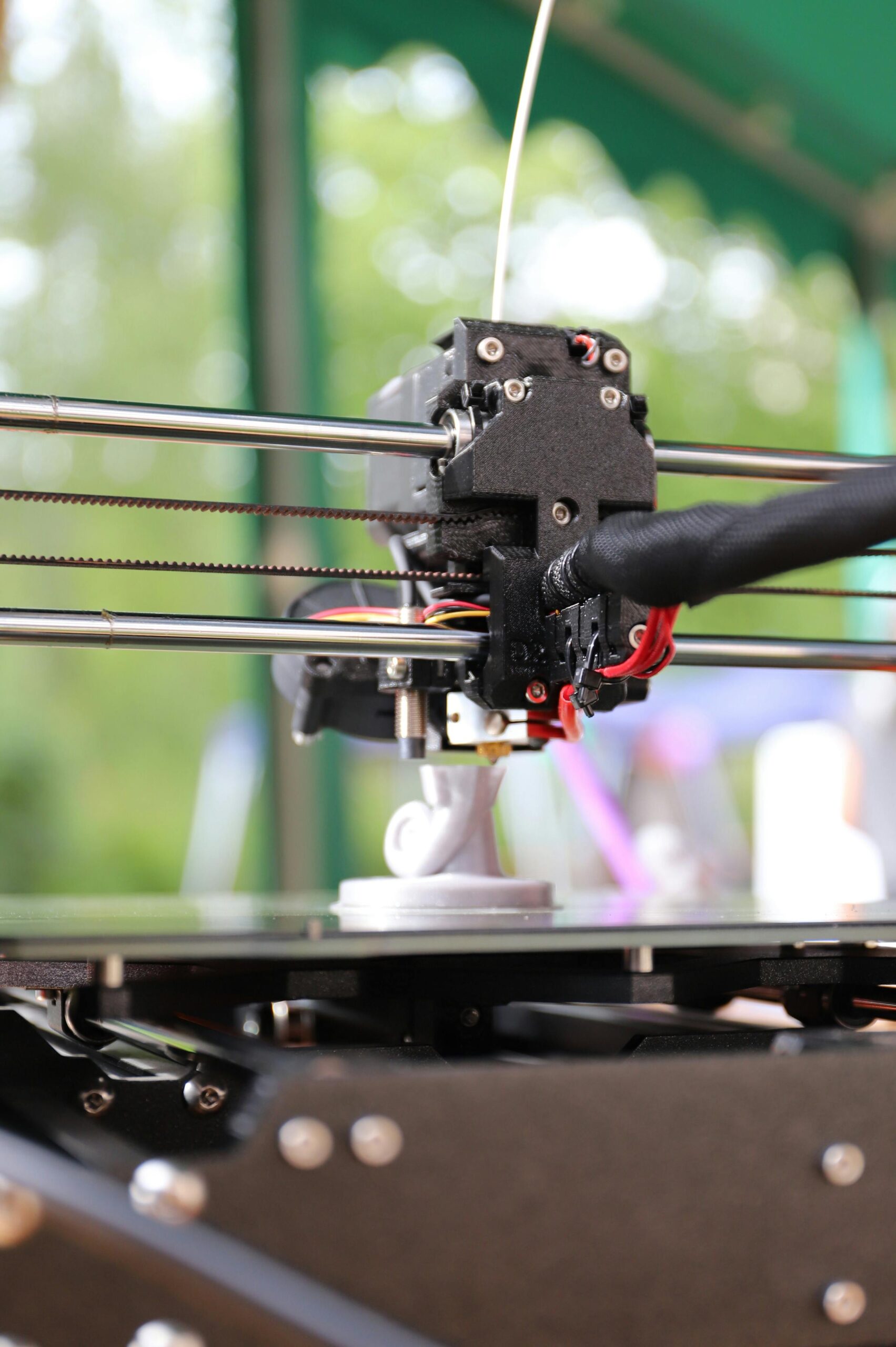
Explore tools, techniques, and applications of 3D modeling and design. Learn step-by-step processes, best practices, and how to stay ahead in this innovative field.
The Fundamentals of 3D Modeling and Design
3D modeling and design serve as the cornerstone of numerous industries, from gaming and animation to architecture and manufacturing. At its core, 3D modeling involves creating three-dimensional representations of objects using specialized software. Understanding its fundamentals is essential for beginners and professionals alike, as it lays the groundwork for advanced techniques and applications.
What is 3D Modeling?
3D modeling is the process of developing a mathematical representation of a three-dimensional object. These representations, known as 3D models, can be displayed as images, animations, or used in physical manufacturing processes like 3D printing. Models are made up of vertices, edges, and faces, which form polygons — the building blocks of 3D geometry.
- Vertices: Points in 3D space that define the shape of an object.
- Edges: Lines connecting vertices.
- Faces: Flat surfaces enclosed by edges, typically forming triangles or quadrilaterals.
The collection of these elements creates the overall geometry of a model, which can range from simple shapes to intricate, lifelike designs.
Types of 3D Modeling Techniques
Each modeling technique serves specific purposes, and understanding their differences is critical for selecting the right approach:
-
Polygonal Modeling:
- Best For: Video games, animation, and real-time applications.
- How It Works: Models are built using polygons, which are easier to manipulate and render in real-time.
- Example: Creating a low-poly game character.
-
NURBS Modeling (Non-Uniform Rational B-Splines):
- Best For: Precision modeling in CAD (Computer-Aided Design) and industrial design.
- How It Works: Uses mathematical curves instead of polygons to create smooth and precise surfaces.
- Example: Designing a car exterior or mechanical part.
-
Sculpting:
- Best For: High-detail organic models like characters and creatures.
- How It Works: Mimics traditional clay sculpting, allowing artists to add fine details like wrinkles or textures.
- Example: Modeling a human face for a film.
-
Procedural Modeling:
- Best For: Large-scale environments or repetitive structures.
- How It Works: Uses algorithms and parameters to generate models automatically.
- Example: Generating an entire cityscape.
The Design Workflow in 3D Modeling
The 3D modeling process involves several distinct stages, each requiring specific skills and tools:
-
Conceptualization:
- Sketching initial ideas on paper or digitally.
- Identifying project requirements, such as scale, level of detail, and final application (e.g., rendering, animation, or manufacturing).
-
Modeling:
- Creating the 3D geometry using software like Blender, Maya, or 3ds Max.
- Choosing the appropriate modeling technique based on the project.
-
Texturing:
- Applying materials and textures to the model’s surface to give it color, patterns, and realistic properties.
- Tools like Substance Painter or Photoshop are often used.
-
Lighting:
- Adding virtual light sources to the scene to enhance realism.
- Adjusting light direction, intensity, and color to achieve the desired visual effect.
-
Rendering:
- Converting the 3D model into a 2D image or animation using rendering engines like Cycles (Blender), V-Ray, or Arnold.
- Rendering can be computationally intensive, requiring powerful hardware.
-
Post-Processing:
- Enhancing the final output with effects like color grading, depth of field, or motion blur using software like Adobe After Effects.
Applications of 3D Modeling
3D modeling is integral to many fields, each leveraging its capabilities differently:
- Entertainment: Creating characters, props, and environments for video games and animated films.
- Architecture: Visualizing building designs and layouts in photorealistic detail before construction begins.
- Manufacturing: Developing prototypes and product designs for 3D printing or traditional manufacturing.
- Medicine: Crafting anatomical models for education and surgical planning.
- Education: Enhancing learning with interactive 3D visualizations of concepts like molecules or historical artifacts.
Skills and Tools for 3D Modeling
To excel in 3D modeling, you need to master certain skills and tools:
-
Essential Skills:
- Spatial Thinking: Understanding 3D space and how objects interact within it.
- Artistic Sense: A good grasp of proportions, balance, and aesthetics.
- Technical Knowledge: Familiarity with modeling software and the ability to troubleshoot hardware limitations.
-
Recommended Tools:
- Blender (free and versatile).
- Autodesk Maya (industry-standard for animation).
- ZBrush (ideal for sculpting).
Diagrams and Visualizations
Incorporating diagrams into your learning process can be incredibly helpful. Below is an example of how polygonal modeling is structured:
| Component | Description |
|---|---|
| Vertex | A point in 3D space. |
| Edge | A line connecting two vertices. |
| Face | A flat surface enclosed by edges. |
A simplified visualization of these components can help you understand how 3D models are constructed.
Explore Industry-Standard Tools and Resources for 3D Modeling on Blender.
By grasping these fundamentals, you’ll be well-equipped to begin your journey in 3D modeling, whether for personal projects or professional applications.
Challenges in 3D Modeling
While 3D modeling offers transformative opportunities, it also comes with its share of challenges. These hurdles can be categorized into technical, creative, and practical difficulties. Understanding and addressing these challenges is crucial for success.
1. Steep Learning Curve
3D modeling tools often have intricate interfaces and complex features. For beginners, this can be overwhelming.
- Examples:
- Software like Autodesk Maya and Blender includes hundreds of tools, menus, and hotkeys that require mastery.
- Advanced techniques like UV mapping or rigging demand not just knowledge of tools but also a solid understanding of geometry and animation.
Solution:
Start with beginner-friendly tools such as TinkerCAD or SketchUp. Gradually transition to more advanced platforms by following online tutorials, taking courses, or joining modeling communities for support.
2. Hardware Limitations
3D modeling is resource-intensive, especially when working with high-poly models, rendering, or simulations.
- Examples:
- Rendering large scenes may result in crashes or slow processing on older systems.
- Creating highly detailed textures and lighting effects demands significant GPU and RAM resources.
Solution:
- Invest in hardware with high-performance GPUs (e.g., NVIDIA RTX series), sufficient RAM (at least 16 GB), and a fast processor.
- Use cloud-based rendering services like NVIDIA Omniverse or Autodesk Rendering for complex projects.
3. Time-Intensive Workflows
The process of creating and refining a detailed 3D model can be extremely time-consuming.
- Examples:
- Designing a single high-quality character for a game or animation might take weeks or even months.
- Complex projects require multiple iterations, especially when collaborating with teams or clients.
Solution:
Use procedural modeling techniques and automation tools to reduce manual workload. Creating reusable assets and templates can also save time.
4. Achieving Realism
For projects requiring photorealistic results, achieving the desired level of detail and accuracy can be daunting.
- Examples:
- Realistic hair, skin textures, and environmental details require advanced techniques like subsurface scattering and ray tracing.
- Lighting plays a critical role, and improper setup can make even a great model appear flat.
Solution:
Study references, use high-quality texture libraries (like Quixel Megascans), and experiment with advanced rendering engines like Unreal Engine, V-Ray, or Arnold.
5. Collaboration and Communication
In professional settings, 3D modeling often involves collaboration among designers, clients, and engineers. Miscommunication can lead to errors or delays.
- Examples:
- An engineer might misinterpret the artistic choices made by a designer.
- Lack of version control can result in overwriting or losing critical files.
Solution:
Implement project management tools like Trello or Asana and use platforms like Autodesk BIM 360 for collaborative work. Clear documentation and frequent meetings ensure alignment.
6. Keeping Up with Technological Advancements
The field of 3D modeling evolves rapidly, with new software, tools, and techniques emerging frequently.
- Examples:
- AI-assisted modeling tools like Adobe Substance 3D and NVIDIA Canvas are changing workflows.
- Staying competitive requires continuous learning.
Solution:
Allocate time for professional development, enroll in training programs, and stay updated with industry trends through forums like CGSociety and Blender Artists.
FAQs: Frequently Asked Questions About 3D Modeling
1. Can beginners learn 3D modeling without prior experience?
Yes! Many beginner-friendly tools, like TinkerCAD and Blender, provide intuitive interfaces and tutorials. Online courses, YouTube videos, and free resources make it easier to start. Commitment to consistent practice is key.
2. What industries rely most on 3D modeling?
3D modeling is pivotal in industries such as:
- Film and Gaming: For animation, special effects, and character design.
- Architecture: To visualize buildings and landscapes before construction.
- Healthcare: For creating custom prosthetics and surgical planning tools.
3. Which 3D modeling software is best for beginners?
TinkerCAD and SketchUp are excellent for beginners. For those looking to advance quickly, Blender offers a free yet professional-grade platform that supports animation, rendering, and sculpting.
4. What is the difference between 3D modeling and 3D rendering?
- 3D Modeling involves creating the object’s structure (geometry, vertices, edges).
- 3D Rendering is the process of adding textures, lighting, and effects to make the model appear realistic or stylized.
5. How long does it take to become proficient in 3D modeling?
It depends on the level of expertise you aim for:
- Basic Skills: A few weeks of consistent practice.
- Intermediate: 3–6 months of learning advanced techniques like rigging or UV mapping.
- Professional: 1–2 years or more, including specialization in specific industries.
6. What hardware do I need for 3D modeling?
For optimal performance:
- CPU: Multi-core processors like AMD Ryzen 9 or Intel i7/i9.
- GPU: NVIDIA RTX 3060 or better for rendering.
- RAM: At least 16 GB (32 GB for advanced projects).
- Storage: SSDs for faster file access.
7. Can 3D models be used in 3D printing?
Yes, but models must meet specific criteria:
- Ensure watertight geometry (no holes or gaps).
- Export in compatible formats like STL or OBJ.
8. What are common mistakes in 3D modeling?
- Overcomplicating the mesh with unnecessary polygons.
- Ignoring proper topology, which can lead to issues during rigging or rendering.
- Not saving work frequently or maintaining version control.
9. How can I make money with 3D modeling?
- Freelance on platforms like Fiverr or Upwork.
- Sell 3D assets on marketplaces like TurboSquid or CGTrader.
- Offer training or create tutorials on platforms like Udemy.
10. Where can I learn advanced 3D modeling techniques?
Advanced courses are available on platforms like Coursera, CGMA (CG Master Academy), and Gnomon Workshop. Joining professional forums or attending industry events like SIGGRAPH can also help.
Stay tuned to our blogs for more on 3D printing!!

